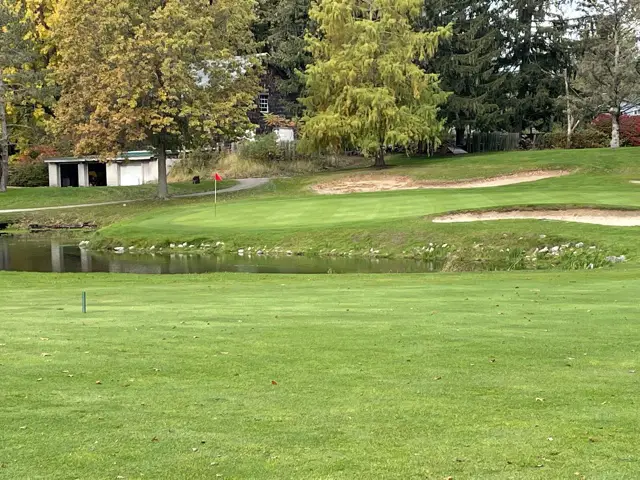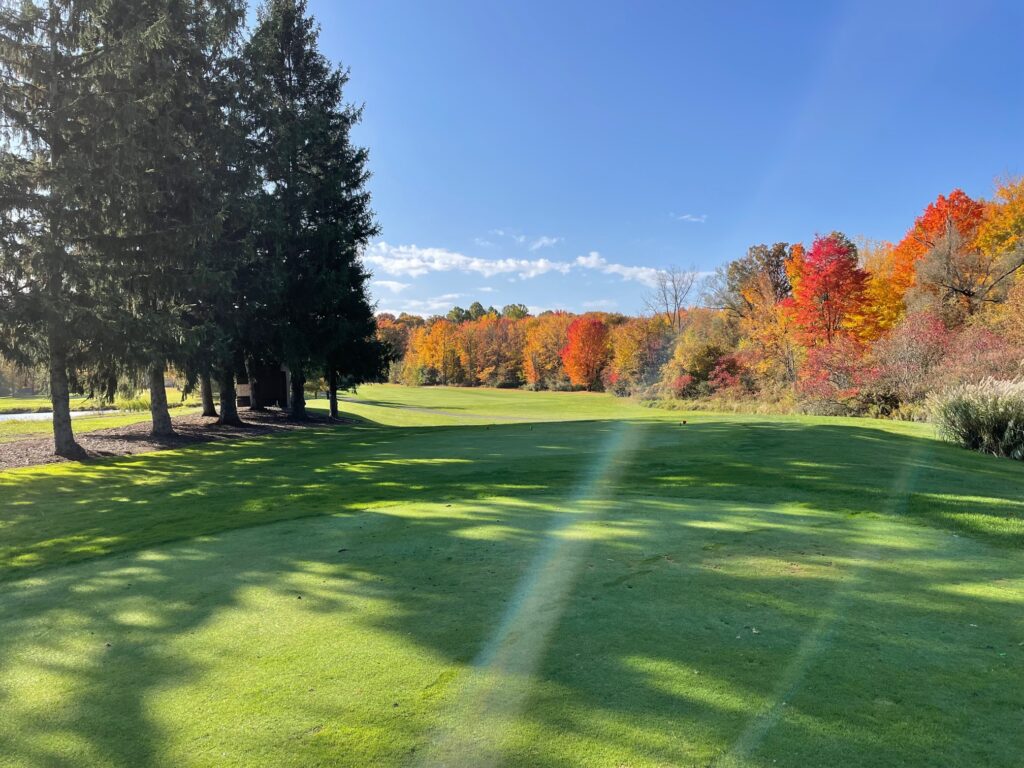Par 5s are an opportunity to possibly make a birdie and make a quality score.
When the better golfers reach a par 5, they are trying to set up their strategy to make a birdie or better on the hole.
Unfortunately for the high handicap golfer, a par 5 can seem overwhelming and intimidating due to the length and the fear of a poor shot.
But for today, let’s focus on some Par 5 Strategy and Scoring Tips you can use the next time you play
Par 5 Strategy: 5 Quick Tips
- Hit It Long
- Play Positional Golf
- Dial in your Wedges
- Practice 5-20 Foot Putts
- Ensure you have a clear 3rd shot

Tip #1: Hit It Long
If you have some quality distance in your golf game and want to play the hole aggressively, you will want to hit a long, powerful tee shot that puts you in position to go for the green in two. Par 5s are holes that the long hitters dream of due to the possibility of getting home in 2 and 2 putting for a birdie or even sinking an eagle putt.
If you play in skins games or competitions that give prizes for the lowest scores on a hole, then the par 5 is your time to shine. For longer hitters, even if you hit it into the trees, you can typically advance the ball far enough down the fairway to leave yourself a wedge shot into the green.
So tee it high and let it fly!
Tip #2: Play Positional Golf
If you aren’t a long hitter and can’t get “home” in two shots, it might be worth considering how you are going to plot your way through this hole to give yourself a makeable birdie putt. One strategy is to start with a reasonable number you would like on your 3rd shot for your approach shot into the green. This might be 80, 90, 100, or 110 yards.
Once you have established this number, you will want to work backwards and figure out the best club for the tee shot and the club you will hit on your 2nd shot. Things to consider are fairway bunker locations, possibly hazards and trees that can cause issues. The blend of the two options if you are borderline on being able to reach the green in 2 shots is to still hit the driver and then make the decision based on where your tee ball ends up.
For example, on my home course, I play a 510 yard par 5 that has water in front of the green. Oftentimes I will be left with 210-230 yards into the green. If I am 210 yards, I will go for the green in 2, if I am 230 yards, I will lay up.
If you decide to lay up, do some quick math and determine what shot puts you in the best positions to score without bringing undue trouble into the shot. For example, 75 yards is a comfortable yardage for me, so I will often use this number in figuring out the distance I need to lay up to.

Tip #3: Dial in Your Wedges
Many golfers will have a wedge left into the 4 par 5s that are found on a course on average. Understanding the distance you carry each wedge and creating a shot chart for your wedges gives you the best chance for hitting close wedge shots. The goal is to hit the shots 20 feet or closer and leave a reasonable birdie putt to put a quality score on the scorecard.
I would recommend creating a chart that looks like the one below for every wedge in your bag:
| Club | Carry Distance (100%) | 90% | 80% | 70% |
| Pitching Wedge | 128 | 118 | 108 | 98 |
| Approach Wedge | 118 | 110 | 102 | 96 |
| SW Club | 105 | 97 | 91 | 85 |
| LW Club | 85 | 76 | 68 | 60 |
This quick reference chart can help you on the course and to provide clarity when selecting your club.
My number one recommended way to build a chart like this is through a launch monitor. I would recommend using a Skytrak Launch Monitor to keep your shot charts updated and accurate to help you perform at your peak!
One of the biggest flaws in most amateur games is the unrealistic number they believe they hit each club in their bag. This often leaves them playing short of the hole and making birdie putts more difficult than they need to be!
Tip #4: Practice 5-20 Foot Putts
Most birdie putts that have a reasonable chance to hit the bottom of the cup will be in the 5-20 foot range. Today when I played I had the following putt lengths for birdie:
- Hole #1: 8 Feet (Miss)
- Hole #4: 21 Feet (Make)
- Hole #5: 2 Feet (Make)
- Hole #6: 6 Feet (Miss)
- Hole #7: 36 Feet (Miss)
- Hole #8: 6 Feet (Make)
I played 9 holes today and made 3 out of 6 birdie putts. I made from 21, 1, and 6 feet and missed from 8, 6, and 36 feet.
The goal is to provide the best chance to make the putt, go through your system and process and give the ball the best roll possible. If it goes in, great! If you miss it, you move on!
Practicing the 5-20 foot range putts will increase your chances of scoring on a par 5 and every hole on the course. We want to capitalize on a quality approach shot and if we have 36 feet left like I did on hole #7, then you lag it up and tap it in for par and move onto the next hole!

Tip #5: Ensure you have a clear 3rd shot
Regardless of what happens off the tee, the goal should be to have a clear, unobstructed shot on the 3rd shot into the green. In the worst case scenario, you take your par and head to the next hole. Don’t force something on the 2nd shot and if you hit a poor tee shot.
Don’t continue to make the situation worse, instead get the ball in play on the 2nd shot and leave yourself a decent 3rd shot. Get the ball around the green and figure out how to make par if you have hit a poor shot or two on that par 5! Don’t compound your mistakes and make a double or worse!
Next Steps: Practice and Monitor
Make sure you keep practicing on your game. I would recommend working on the following:
- Train for greater swing speed with SuperSpeed Golf
- Develop a stock shot!
- Control the low point in your swing!
- Dial in your distance with your wedges!
Extra speed, a stock shot, quality ball striking and understanding the distance you hit your wedges and your irons is a great recipe for scoring, especially on par 5s! Get to work today, enjoy the journey and enjoy each birdie that you make!

My Secret To Golf Improvement
Let’s face it, in order to get really good at golf, we must practice frequently. About give years ago, I made the leap and invested in a golf simulator build for my garage. I went with a SkyTrak Launch Monitor and the TGC software and can now play over 100,000 courses including Augusta, Pebble Beach, Bethpage Black, Whistling Straits. St. Andrews and many other of the top 100 courses in the world.
This golf simulator setup, which is more affordable that you might imagine, has been a game changer. I can now play golf everyday of the year regardless of rain, snow, cold weather or time of day. I can practice or play rounds of golf. I can stand in the 11th fairway at Augusta and with the auto-rewind feature I am able to practice my approach shots from various differences.
It is worth checking out through Rain or Shine Golf as they offer some incredible packages along with financing offers that are difficult to beat.
Some direct links to Rain or Shine Golf for pricing and financing:
